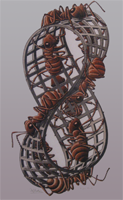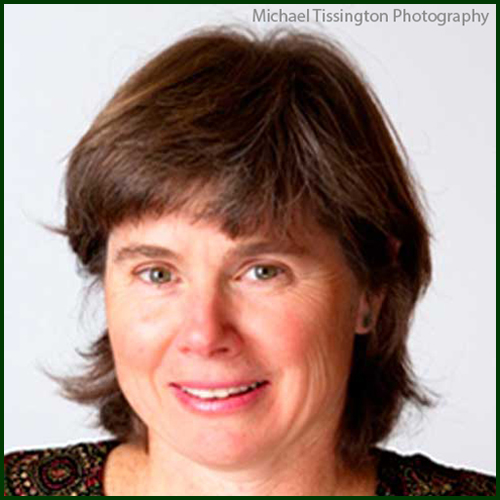About Katherine Wieseman
I am excited to help others experience the benefits of “Journeys Through Movement” which emerge from exploring one’s potential of learning...
Katherine Wieseman, Ph.D., GCFP, guides individuals in their personalized journeys to celebrate learning, moving and living with joy and pleasure. How? She helps each client (referred to as a student) to pay attention to the significance of physical sensations, emotions, thoughts, and habitual movement patterns. Paying attention fosters awareness which contributes to improving one's quality of life. When we feel integration and connectedness within ourselves, we open ourselves to new possibilities of connection with others, and create more potential to live with vitality and joy in our hearts.
Dancing Argentinean tango, walking in nature, swimming in a lake, gliding across the snow on her cross-country skis, and working in her vegetable garden bring Katherine great joy. Momentous experiences such as coming to know Ubuntu (a Southern African concept referring to humanity and sense of interconnectedness) in South Africa and walking on the Camino de Santiago de Compostela in Spain have contributed to her transformative journey.
Katherine is an experienced educator with more than 3 decades of teaching experience in subjects including the sciences, interdisciplinary learning, problem-solving, sports, movement awareness, and teacher education. She has taught in multicultural and multinational settings throughout the USA and Belgium, with students ranging from the highly energetic 5 year old to the still young-at-heart octogenarian. Her first passion in science teaching and learning (also the field of her Ph.D.) has led her into work with movement intelligence and neuroplasticity. She is a Guild Certified Feldenkrais Practitioner™ (GCFP), who also has completed Nia White Belt training.
CREDENTIALS
- Ph.D. in Science Education, M.A. in Education Foundations, B.S. in Biology // Teacher certifications in Colorado, New Mexico, Washington.
- Guild Certified Feldenkrais PractitionerCM and Teacher
- Nia White Belt Training
- Language skills: Spanish, French, Dutch.

AT THE HEART OF HER WORK
What do movement, music, you, and other living beings have in common? Each is an expression of energy. Scientists conceptualize energy in terms of particles and waves, and vibrations emitted. The Chinese have identified chi energy as a vital life force existing in all living beings; yogis call this energy prana. Spiritual communities associate energy with qualities of the heart, such as love. Regardless of the form energy takes, movement is one of its attributes.
Focusing on and fusing movement and music are at the heart of Katherine's work in helping others in their transformative journeys. Besides the fact that she personally enjoys them, movement and music are fundamental to existence.
Movement is central to the survival of each living cell in an organism, and the whole of the organism. We often think of movement in relation to what the skeleton and muscles do. However, the muscles cannot function and the skeleton will not move without the work of the nervous system. Ultimately, “without movement there is no life,” as Dr. Moshe Feldenkrais once stated.
What would the music of our nervous system sound like if we listened? Do you know that areas in the brain which activate when we engage in movements like swinging a golf club also engage when we listen to expressive moments in music? Check out "To Tug Hearts, Music Must First Tickle the Neurons" in The New York Times (April 18, 2011) to learn more.
KATHERINE’S APPROACH
Katherine’s approach has its roots in ten essential insights gained from her experiences with the Feldenkrais Method®, Mind Body Studies, Movement Intelligence, Argentinean tango, a Chinese 5 Element viewpoint of wellbeing, and ancestral wisdom traditions.
- “Learning is a gift of life” (Moshe Feldenkrais, Embodied Wisdom, p. 58)
- Celebrate the uniqueness and worth of each being
- Be as fully present and attentive as possible
- Sense-Connect-Integrate through softening, gentleness, respect and effortlessness
- Explore-Improvise-Discover in the routine and new of a moment
- Emotions matter
- Embrace natural flow, interdependence, and harmony
- Community strings are intangible (energetic) as well as tangible (visible)
- Community wellbeing cannot happen without participation, interaction, responsibility, respect, trust, and synergy
- We each lead others in some way at some time; lead and follow; do and wait
A LONGER VERSION OF MY STORY
I was born in a bedroom community of New York City, and grew up as a child living between multiple cultures.
MEANING OF THE LOGO
 The colours of the logo have significance in Chinese 5 Element theory. Red is associated with the
elemental force of Fire - transformation, connection, community, communication, and joy. Green is
associated with the elemental force of Wood - vision, creativity, growth, decision making, and
manifesting purpose and life path.
The colours of the logo have significance in Chinese 5 Element theory. Red is associated with the
elemental force of Fire - transformation, connection, community, communication, and joy. Green is
associated with the elemental force of Wood - vision, creativity, growth, decision making, and
manifesting purpose and life path.
The red twisted loop in the logo is a Möbius Strip, and for Katherine is a shape that evokes playfulness, curiousity, and
thinking in different ways. You begin a journey when you draw a line lengthwise down its middle and
end up where you started. If you cut the across the width of the strip, both sides of the long
rectangular strip have a lengthwise line down their middle. The strip becomes a single continuous curve with only one surface.
(By the way, mathematical thinking is important in the worlds of movement and music.)
 Like the music notes that pass through the Möbius Strip,
Like the music notes that pass through the Möbius Strip,
 The Möbius Strip shows up in the Dutch artist Escher’s work
The Möbius Strip shows up in the Dutch artist Escher’s work

